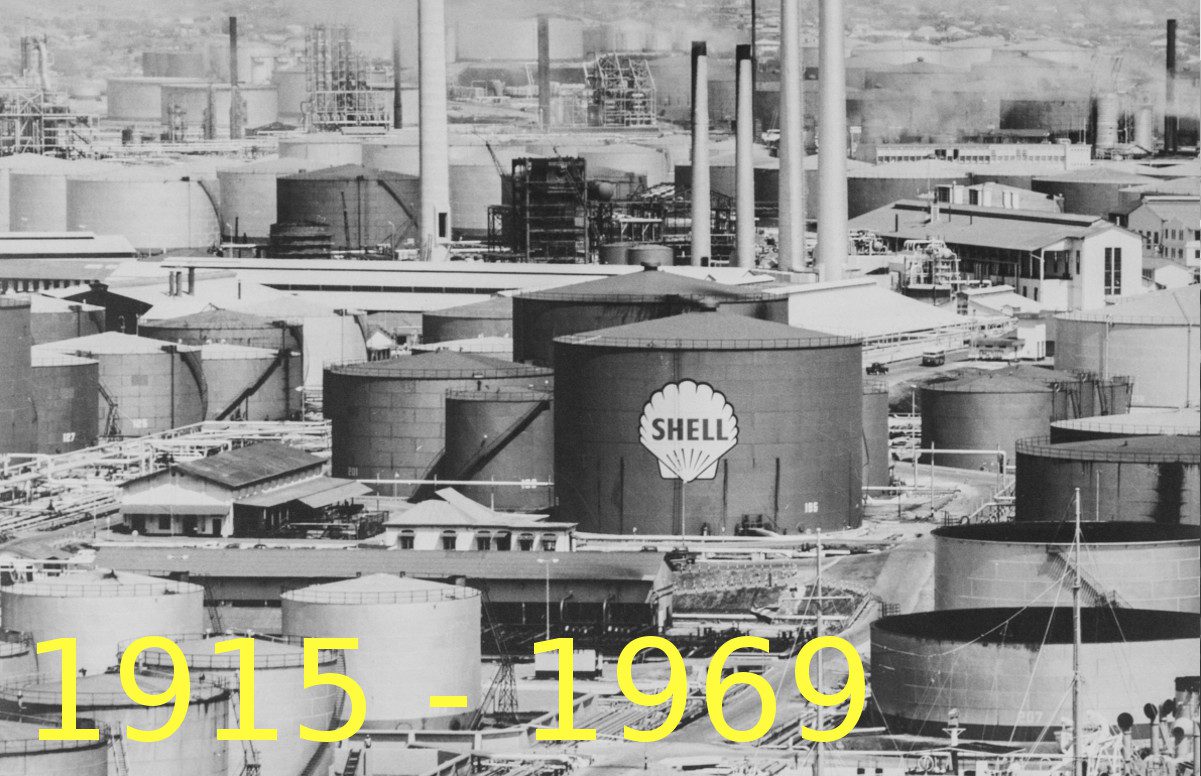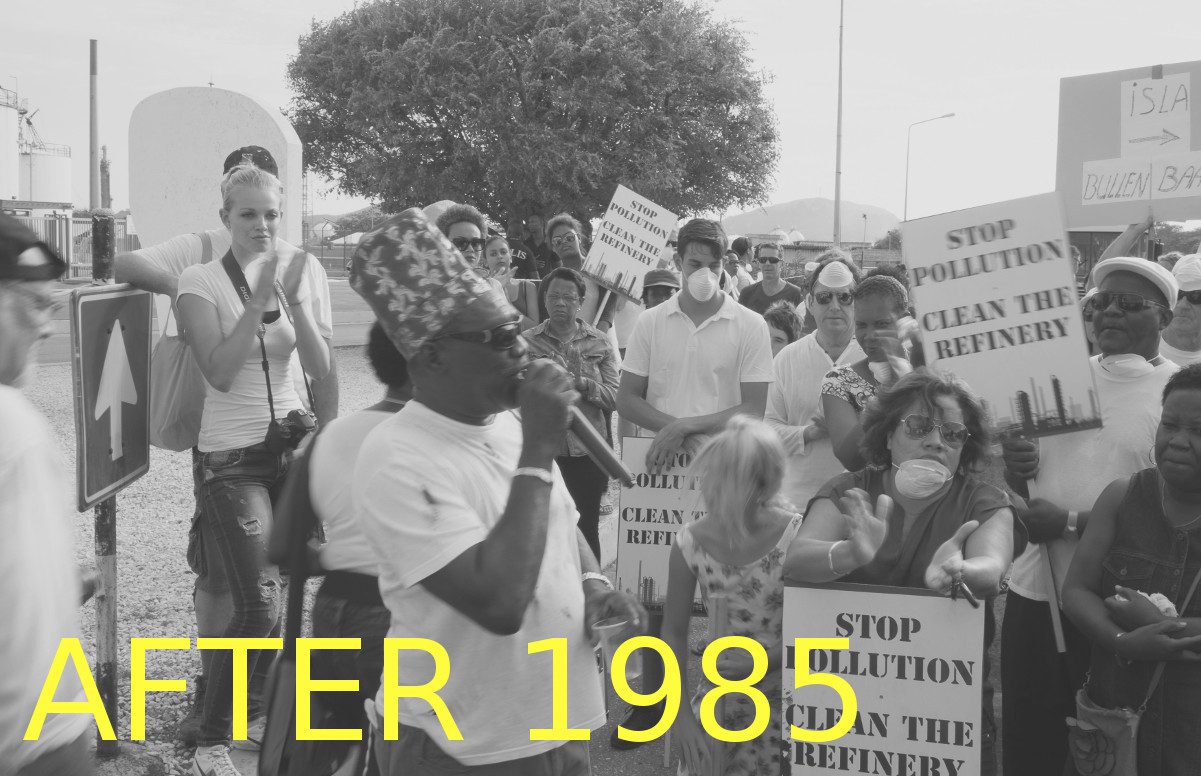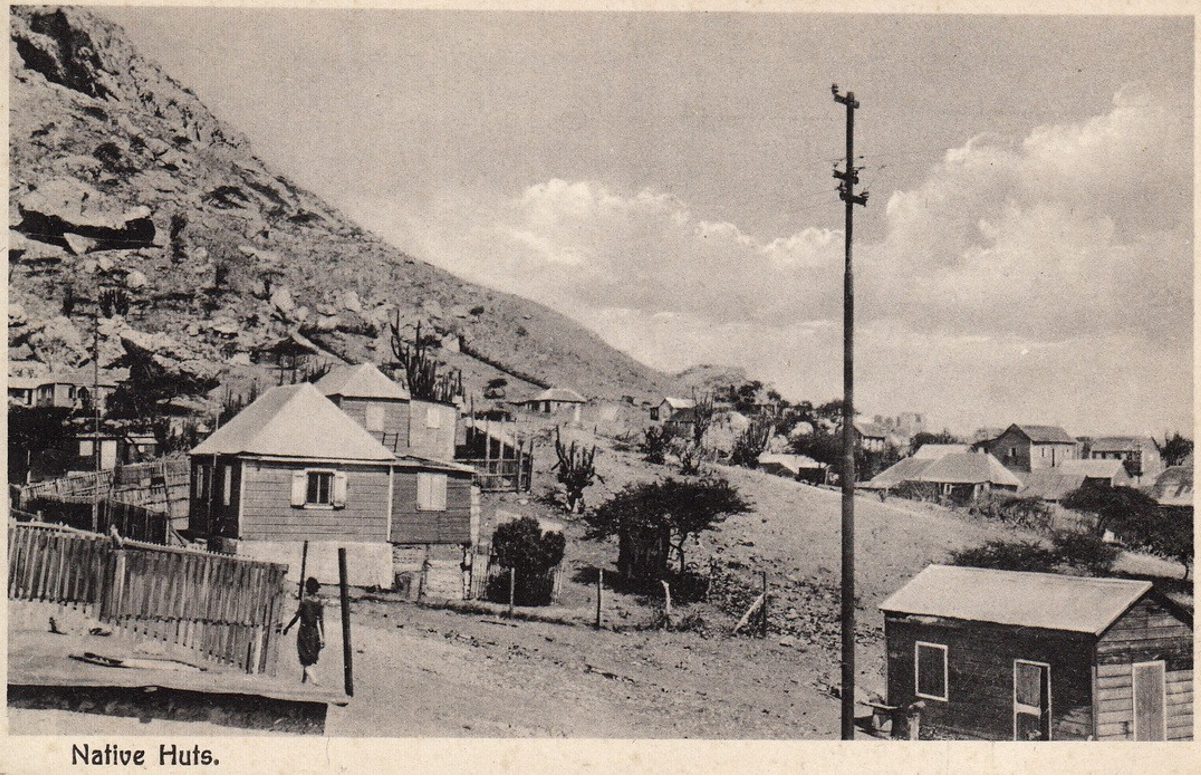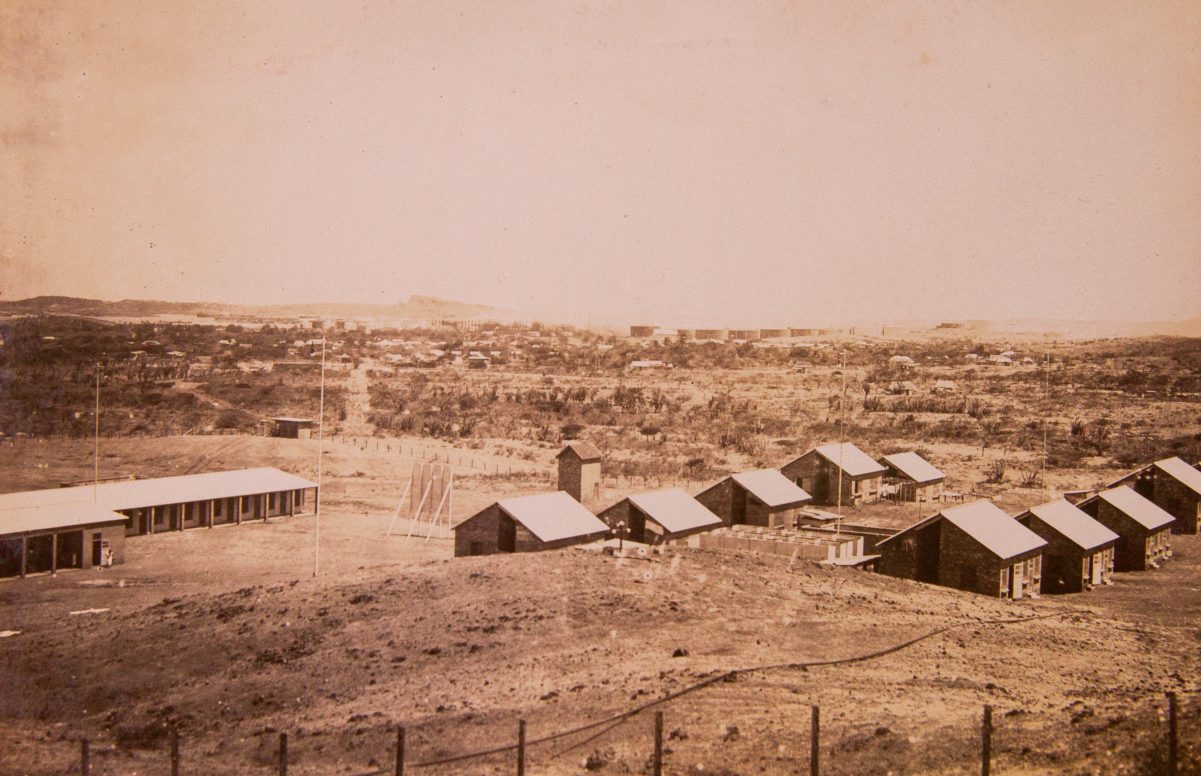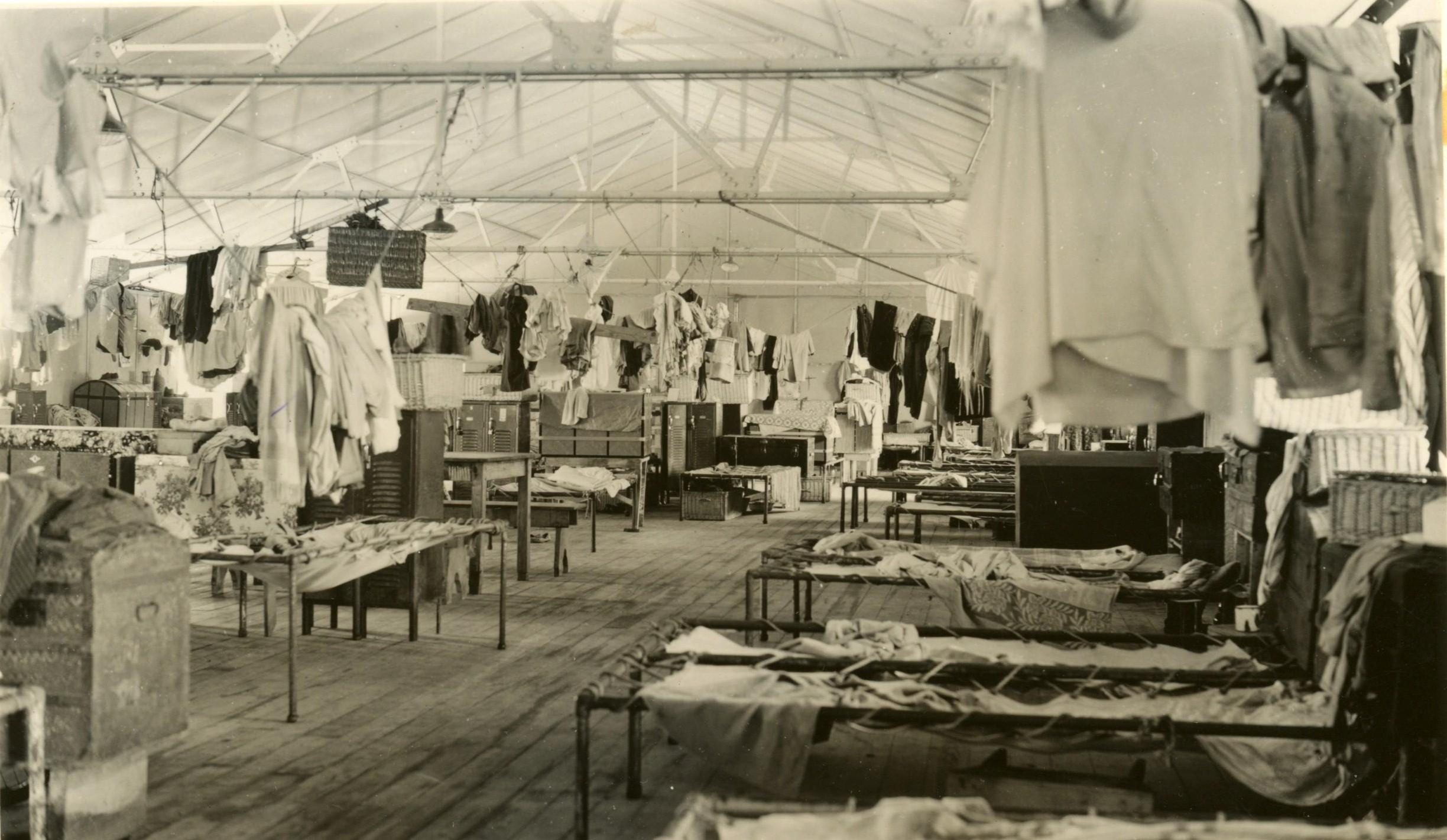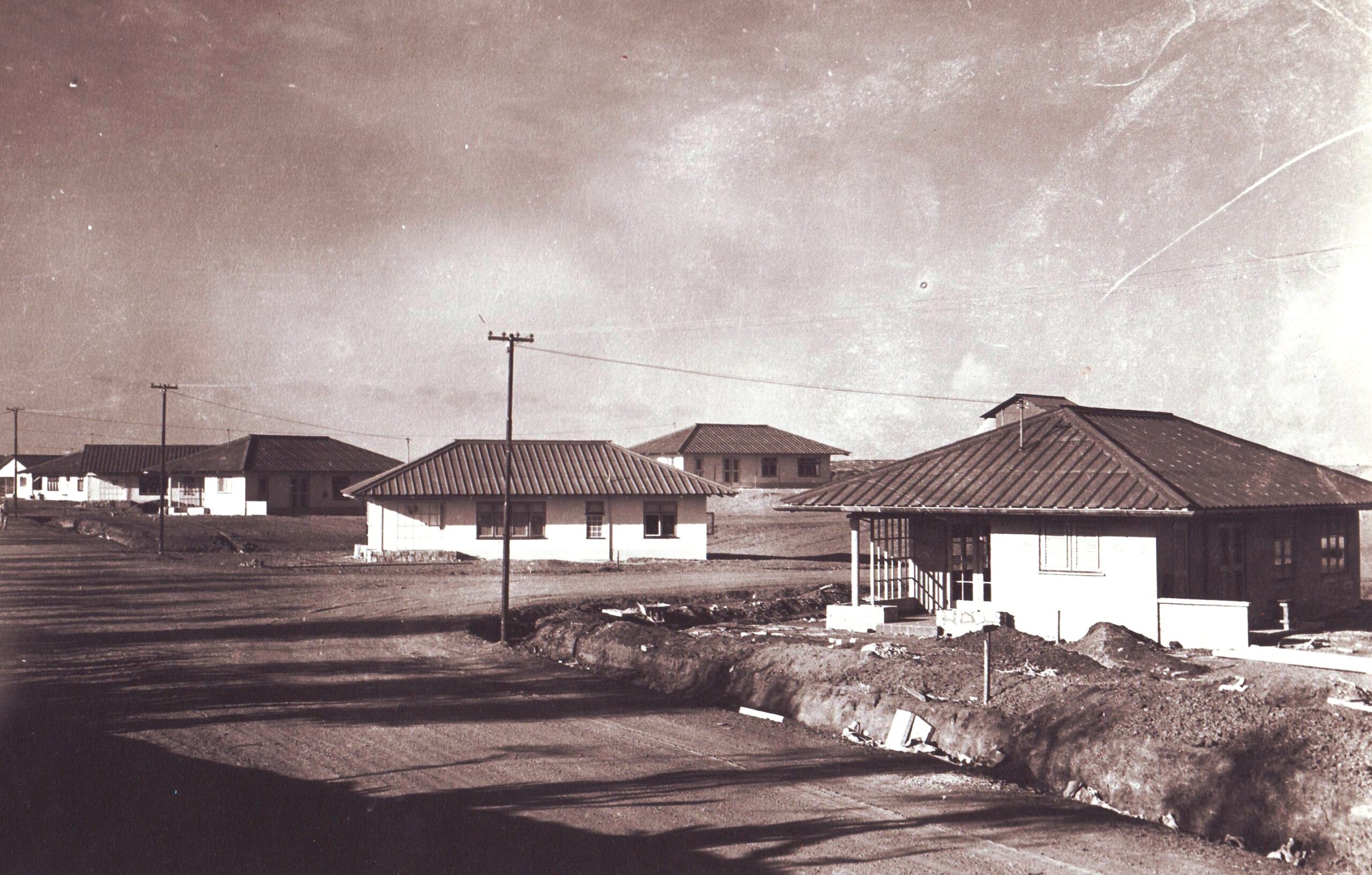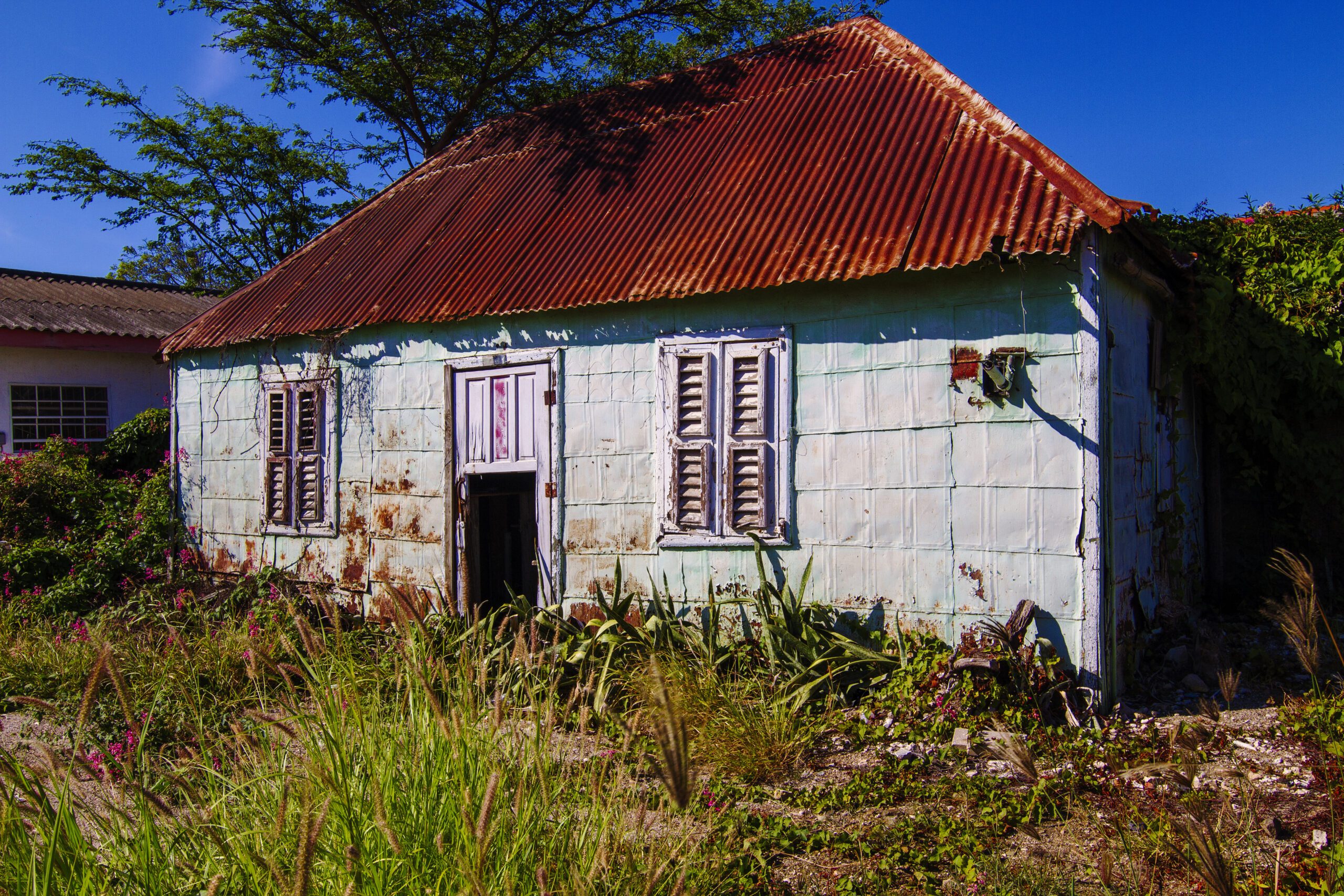
Isla den Nos Bida
100 years Refinery in Curaçao – 100 aña Refineria na Kòrsou
Exhibition
1915 – 1969
During the first period of expansion, from 1923 to 1930, the company put more effort into housing its European employees then in providing living quarters for workmen from the region. The migrants who first came to Curaçao to work at the refinery lived in spartan barracks. These were scattered around the refinery and divided by nationality, including Venezuelan, Surinamese and Portuguese. During the second area of expansion, from 1935 to 1940, CPIM started construction of an extensive barrack camp at Suffisant. This laborers’ camp was strictly divided into ethnic groups, separated by nationality in various areas. This a regime of segregation was strictly enforced. Only British West Indians, who enjoyed a special position, were absolved from this system of apartheid.
Suffisant was fenced in by its own gate. Venezuelans were joined by Portuguese laborers from Valentijn and Surinamese from Heintje Kool. Suffisantkamp consisted of barracks until well after World War II. Afterwards it was restyled into a proper housing area, where thousands of laborers from Portugal, Venezuela, Suriname, the British West-Indies as well as Colombia and Dominican Republic lived in harmonious segregation. The first area to be developed was Surinamedorp, which housed Surinamese families and a large number of bachelors. Informants remember wild parties where prostitutes were smuggled into the bachelors’ quarters at the edge of the camp. The rest of Suffisantkamp remained divided in a Venezuelan Camp, a Portuguese Camp, etc. Over time the complex of barracks grew into a real village, which by 1950 was officially named Suffisantdorp.
In contrast to the more gradual construction of Suffisant and Surinamedorp, Groot Kwartier was a neighborhood build by design. Here a town-planning blueprint was used as had been the case in Emmastad and Julianadorp. The architecturally planned part of Groot Kwartier housed various refinery workers, including pletters, a group of Dutch laborers that culturally and socially tended to fall between the cracks. As a neighborhood, Groot Kwartier was very much supported by the refinery. Residents enjoyed many services the company offered, including recreational facilities. CPIM started building the neighborhood of Cas Cora for local employees in the early 1950s, yet this area was executed on a much smaller scale.
Originally Curaçaoan housing patterns developed around the plantation structures, after Emancipation followed by church parishes. The Industrial Revolution brought a new form of urban development for the laborers in the vicinity of the refinery.
Such an area arose under the poisonous smog close to the refinery in the northwestern corner of Schottegat, centered around the neighborhoods of Wishi and Marchena. These barios were built from the 1930s onward by Curaçaoan laborers, without any form of town planning or government input. Many Curaçaoans from Banda’Bou as well as families from abroad squatted this area. Constructed from available materials, such as oil drums and other industrial scrap, Wishi, Marchena and Buena Vista eventually grew into ghettos, forming a new urban sprawl. A reporter from the daily newspaper Amigoe, who visited Marchena in 1946 noted with great foresight: “The area is penetrated by a nasty smell, a benevolence of modern industry. Can’t those chimneys at Isla be raised a little higher?”


